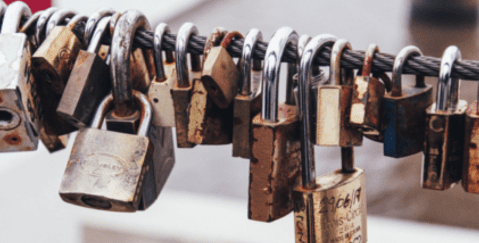What is Furloughing? Job Retention Scheme FAQs
The Job Retention Scheme is an unprecedented government initiative designed to help employers avoid making large-scale redundancies, or laying staff off without pay, during the coronavirus pandemic.
The purpose of the Scheme is to provide employers with financial assistance during this uncertain economic time, and also to maintain job security and a certain level of income for staff whose jobs may otherwise be affected by the pandemic.
What is the government’s Job Retention Scheme?
The Job Retention Scheme is an unprecedented government initiative designed to help employers avoid making large-scale redundancies, or laying staff off without pay, during the coronavirus pandemic. The purpose of the Scheme is to provide employers with financial assistance during this uncertain economic time, and also to maintain job security and a certain level of income for staff whose jobs may otherwise be affected by the pandemic.
What does ‘furloughing’ staff mean?
The term ‘furlough’ is an American term which has not previously been used in UK employment law. Essentially, it means temporarily laying off staff for a period of time whilst keeping them on the payroll.
What financial support is provided under the Scheme?
Under the Scheme, the government will provide a grant to cover “the lower of 80% of an employee’s regular wage or £2,500 per month, plus the associated Employer National Insurance contributions and minimum automatic enrolment employer pension contributions on that subsidised wage. Fees, commission and bonuses should not be included”.
More detailed guidance around how to calculate claims for Employer NI contributions and minimum automatic enrolment pension contributions is expected before the Scheme goes live.
The Scheme will be backdated to 1 March 2020 and will be in place for an initial three month period, although could be extended if necessary.
Which employers can access the Scheme?
All UK employers who had created and started a PAYE payroll scheme on 28 February 2020 can ‘apply’ to use the Scheme, including:
- businesses
- charities
- recruitment agencies (where agency workers are paid through PAYE)
- public authorities
The government has said it does not expect the Scheme to be used by many public sector organisations as the majority continue to provide essential public services or are contributing to the response to the pandemic.
The government has also confirmed that where a public authority is in receipt of funding for staff costs, the expectation is for that money to be used to pay wages in the usual way.
We anticipate that any public authority seeking to use the Job Retention Scheme will be expected to justify its reasoning as the government will wish to avoid effectively paying twice for staffing costs.
Which categories of staff can benefit from the Scheme?
The guidance confirms the Scheme is open to employees on the PAYE payroll at 28 February 2020 and on “any type of contract” including:
- full-time employees;
- part-time employees;
- employees on agency contract; and
- employees on flexible or zero hours contracts.
Does the Scheme apply to self-employed contractors or freelancers?
No. Self-employed individuals may be eligible to claim Universal Credit and/or government self-employed income support, both of which are separate schemes.
How will the government pay staff salaries under the Scheme?
It is important to understand that as the employer, you will still be required to pay staff salaries under the Scheme. The government will then reimburse costs, subject to the limits set out above.
Are employers obliged to make up the shortfall between the government contribution and staff’s usual salaries?
No, there is no obligation to make up the shortfall in furloughed staff salaries. Under some circumstances employers may wish to do so, but the implications of this should be carefully considered.
Where employers are imposing a furlough period on staff (if a consultation procedure is not followed, or if agreement has not been reached through consultation), employers may choose to make up the salary shortfall in order to mitigate the risk of claims, for example claims for breach of contract. However, thought should be given to the perceived unfairness of a scenario where furloughed staff and those who are required to continue to work, are in the same financial position.
How should employers select staff to furlough?
Staff selection may be straightforward if the entire workforce is affected, or if whole categories of staff are affected. However the more likely scenario might be that a skeleton staff needs to be maintained during the pandemic, so staff will either be selected for furlough or selected to remain at work. In these circumstances, a fair and objective selection process should be designed in order to justify the designation of all staff into one or other of these categories. It might also be appropriate to invite volunteers for remaining at work, and to discuss an employee’s proposed selection with them as part of a consultation procedure with a view to agreeing the change.
Can furloughed staff be called upon to perform any work during the furlough period?
No, any employee who is furloughed should not perform any work for their furloughing employer whilst they are on furlough leave. They are however entitled to perform voluntary work and/or complete training.
We have a number of staff on sick leave or self-isolating and unable to work from home. Can we furlough these staff?
The guidance confirms staff on sick leave can be placed on furlough leave once their sick leave comes to an end. The guidance also confirms staff who are “shielding” can be placed on furlough leave.
What happens if an employee who has been furloughed subsequently falls sick?
Yes, the updated guidance confirms furloughed employees retain their SSP entitlement. However, depending on the financial arrangements in place during the furlough period, staff who fall ill whilst on furlough leave may well not report this to their employer.
How does the furlough period interact with annual leave?
Employees who are furloughed continue to be employed and will therefore continue to accrue annual leave. The guidance issued to date also does not prevent annual leave from being taken during furlough leave.
What happens to employee benefits such as pensions and bonuses during the furlough period?
The government grant will include the minimum automatic enrolment employer pension contributions on the subsidised wage.
The guidance confirms fees, commission and bonuses should not be included in the grant claim. However, this does not mean the employer can automatically stop providing contractual benefits during the furlough period. If there is a proposal to reduce or pause benefits during the furlough period, consultation should take place on this basis with a view to reaching agreement.
To discuss the steps your organisation should take now in relation to coronavirus, please contact Sarah Martin on 07799 136 091, Caitlin Anniss on 07909 683 938 or Michaela Calcutt on 0117 314 5619.












